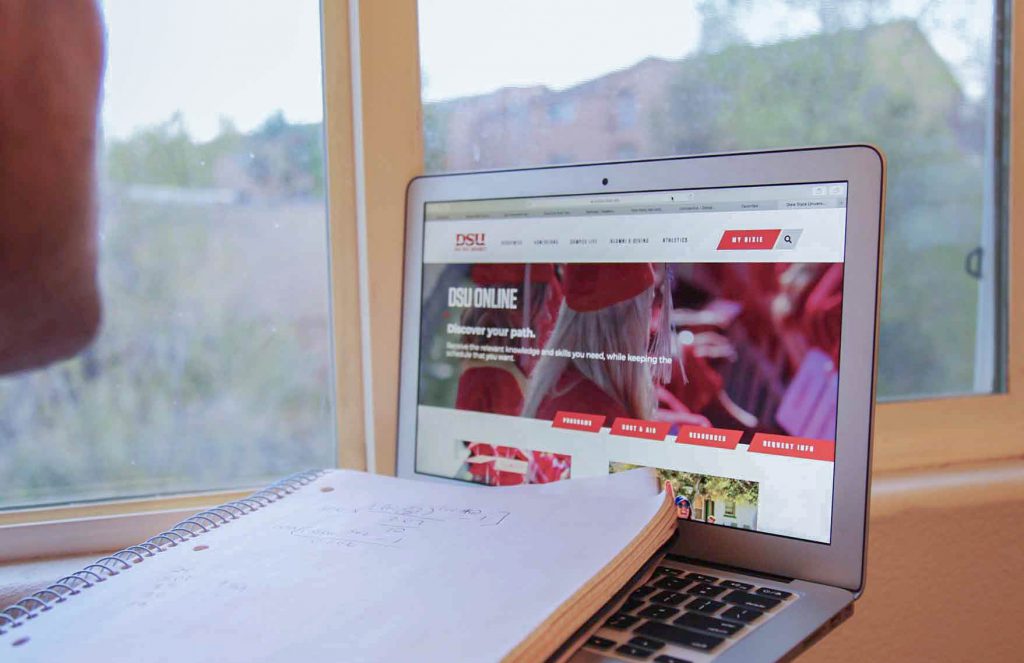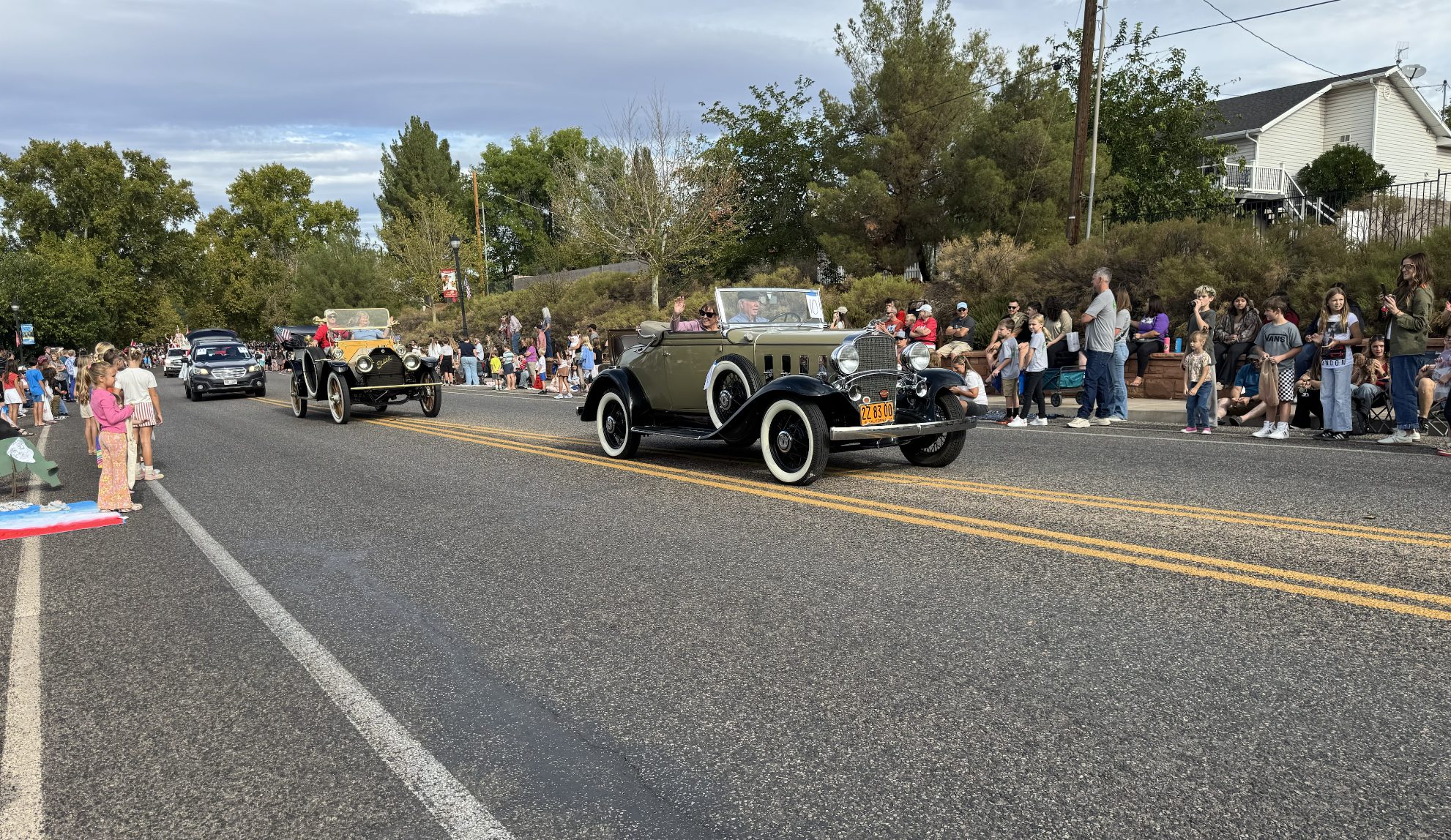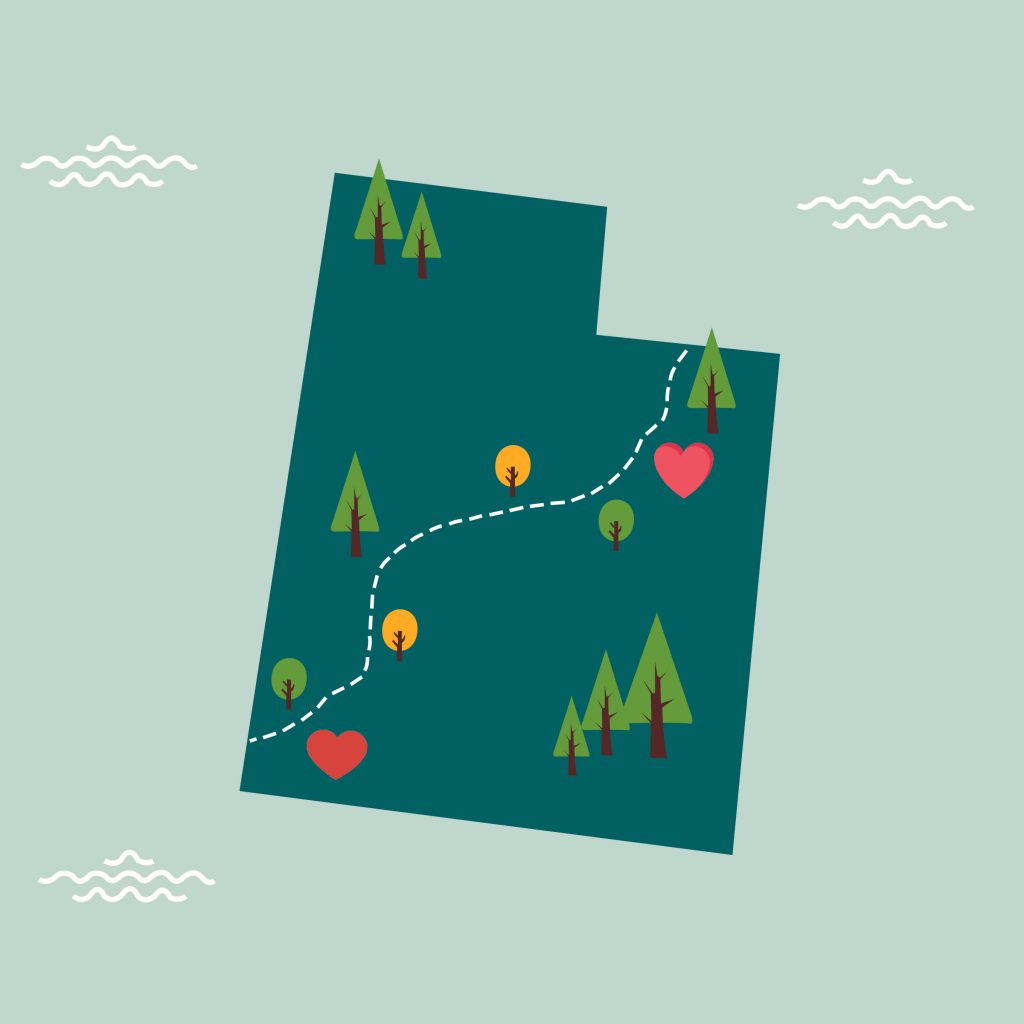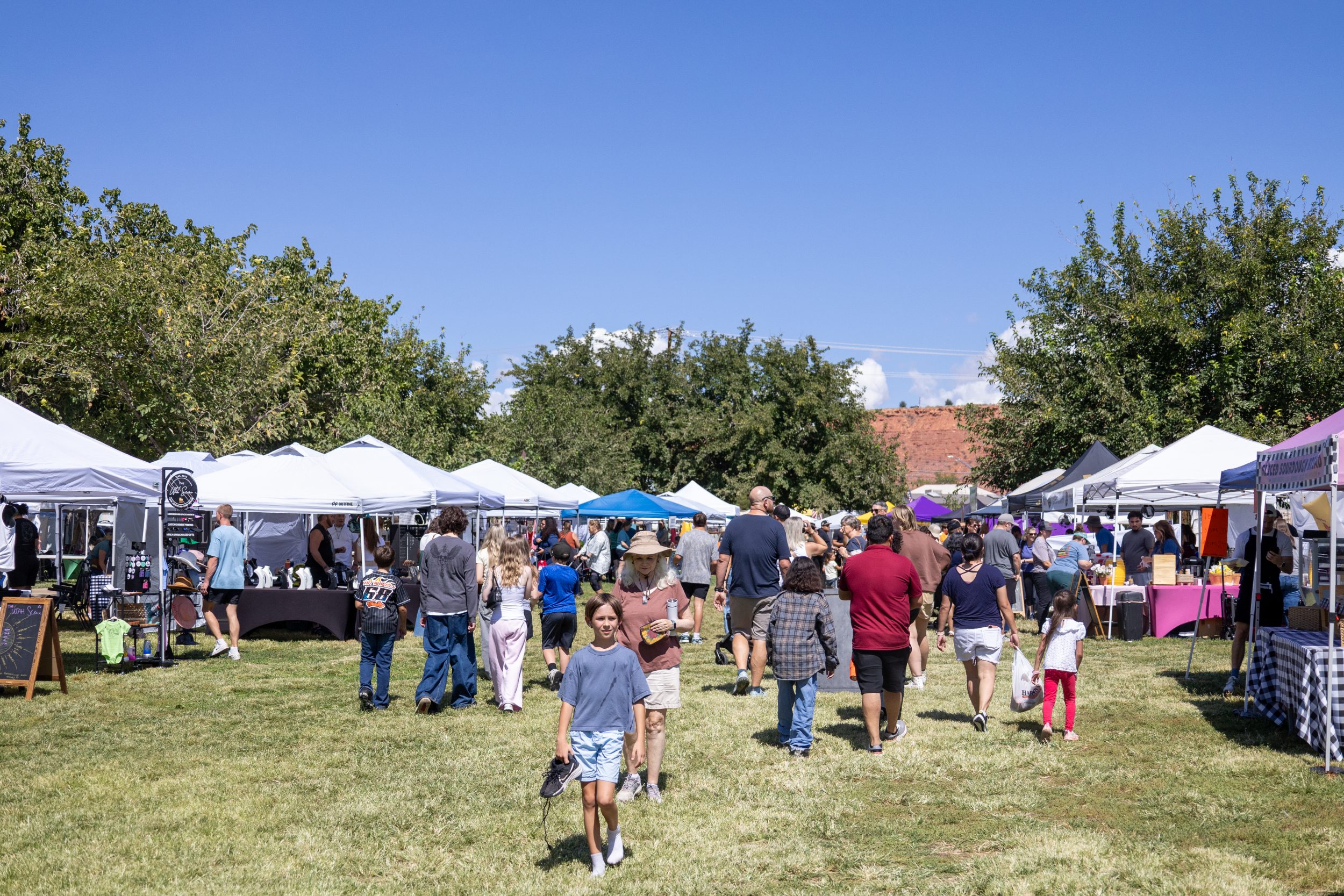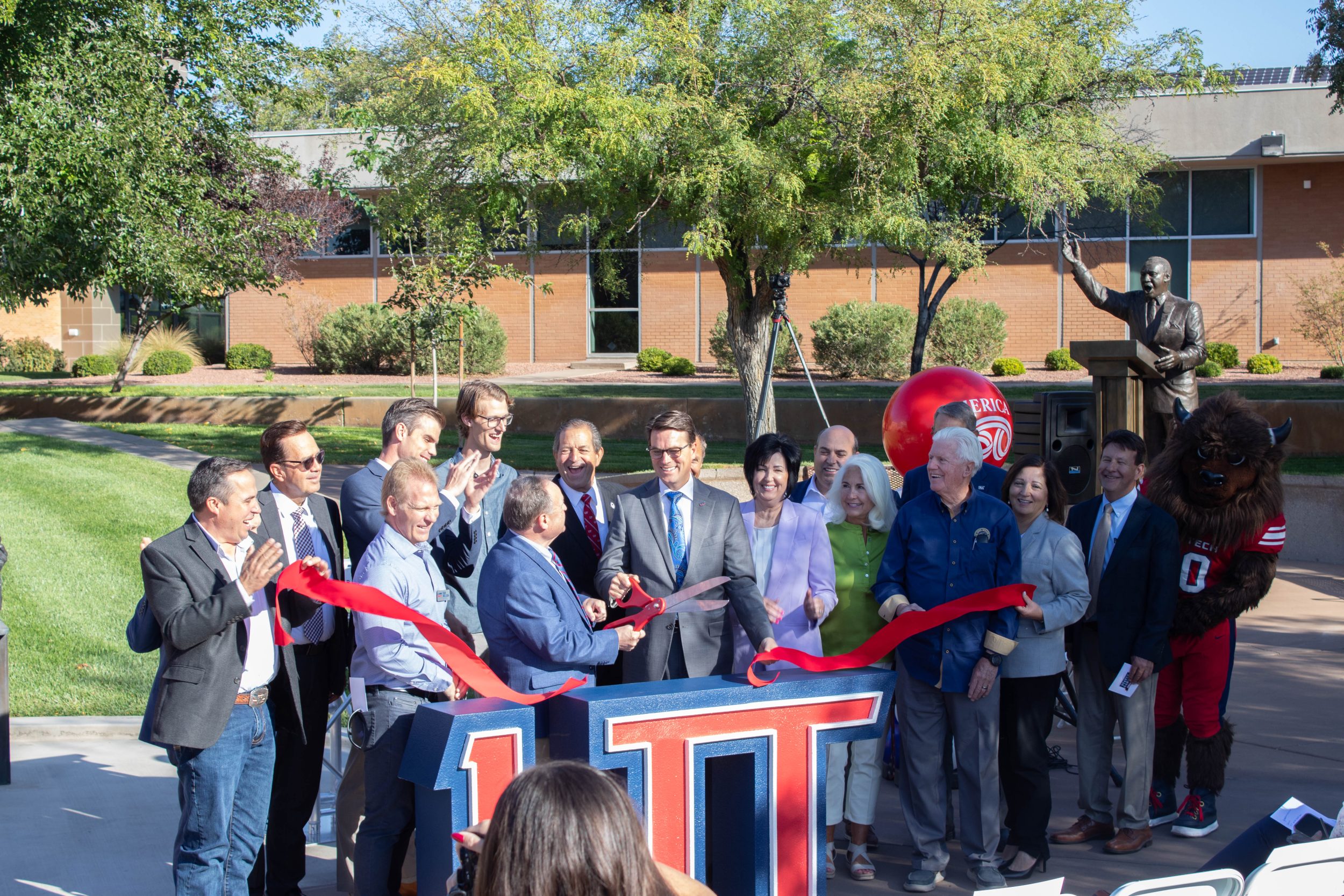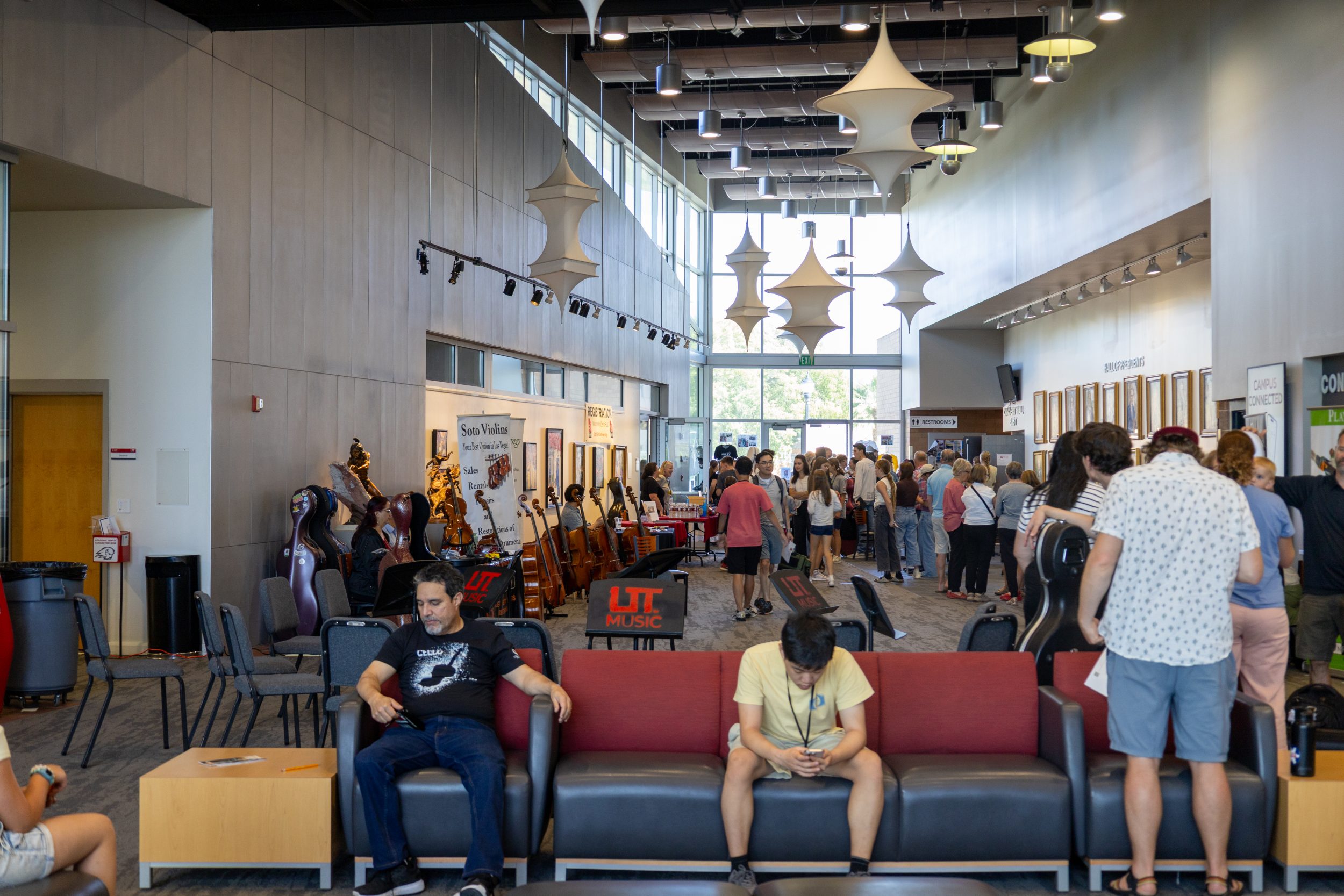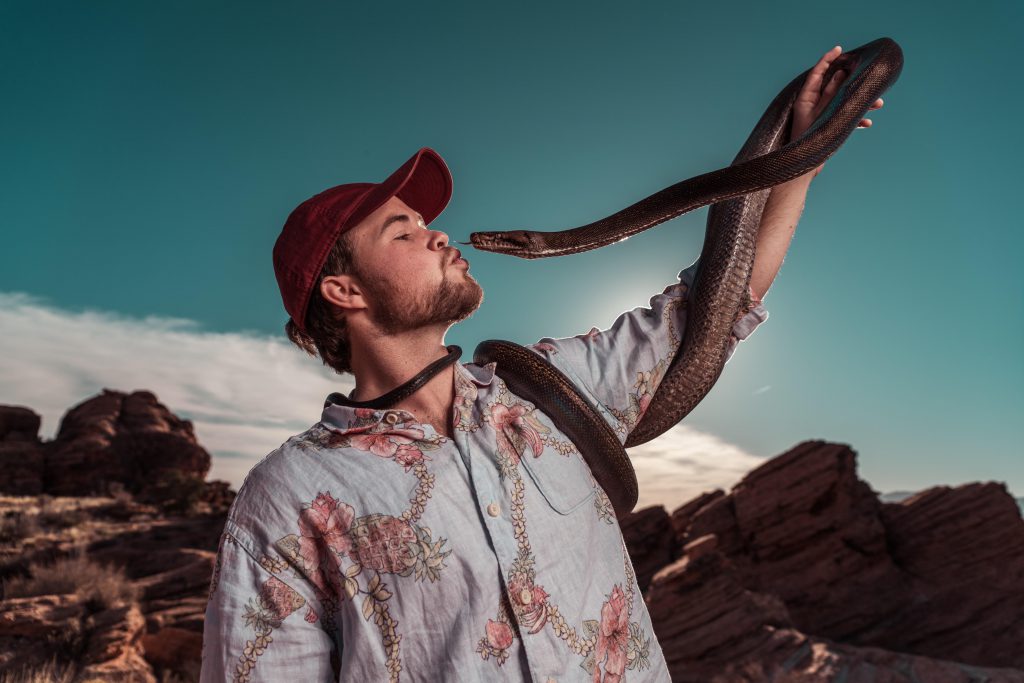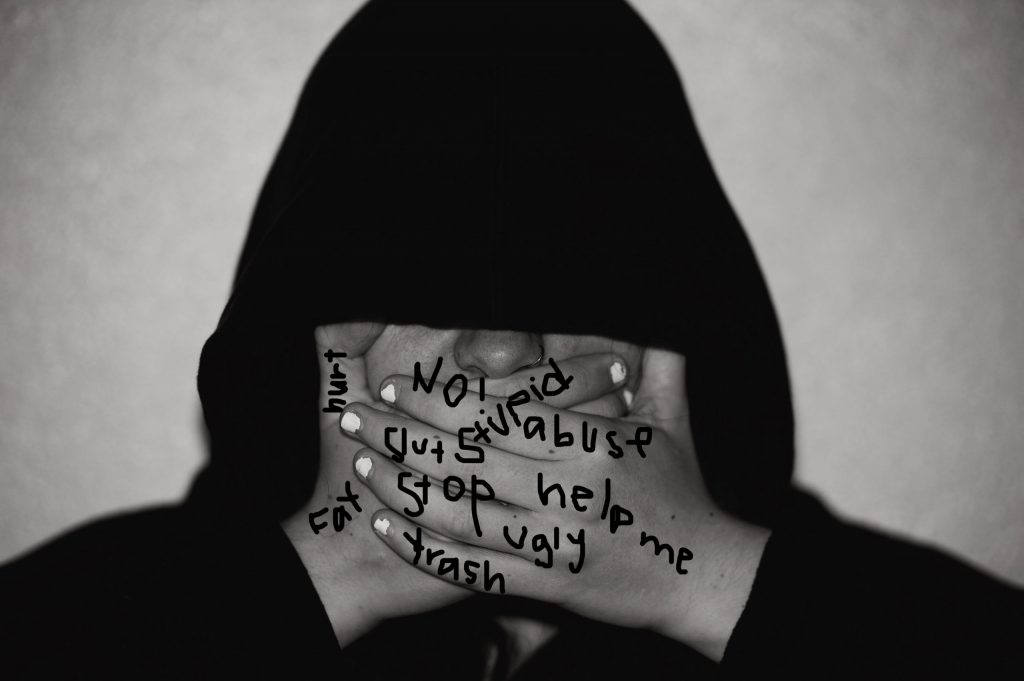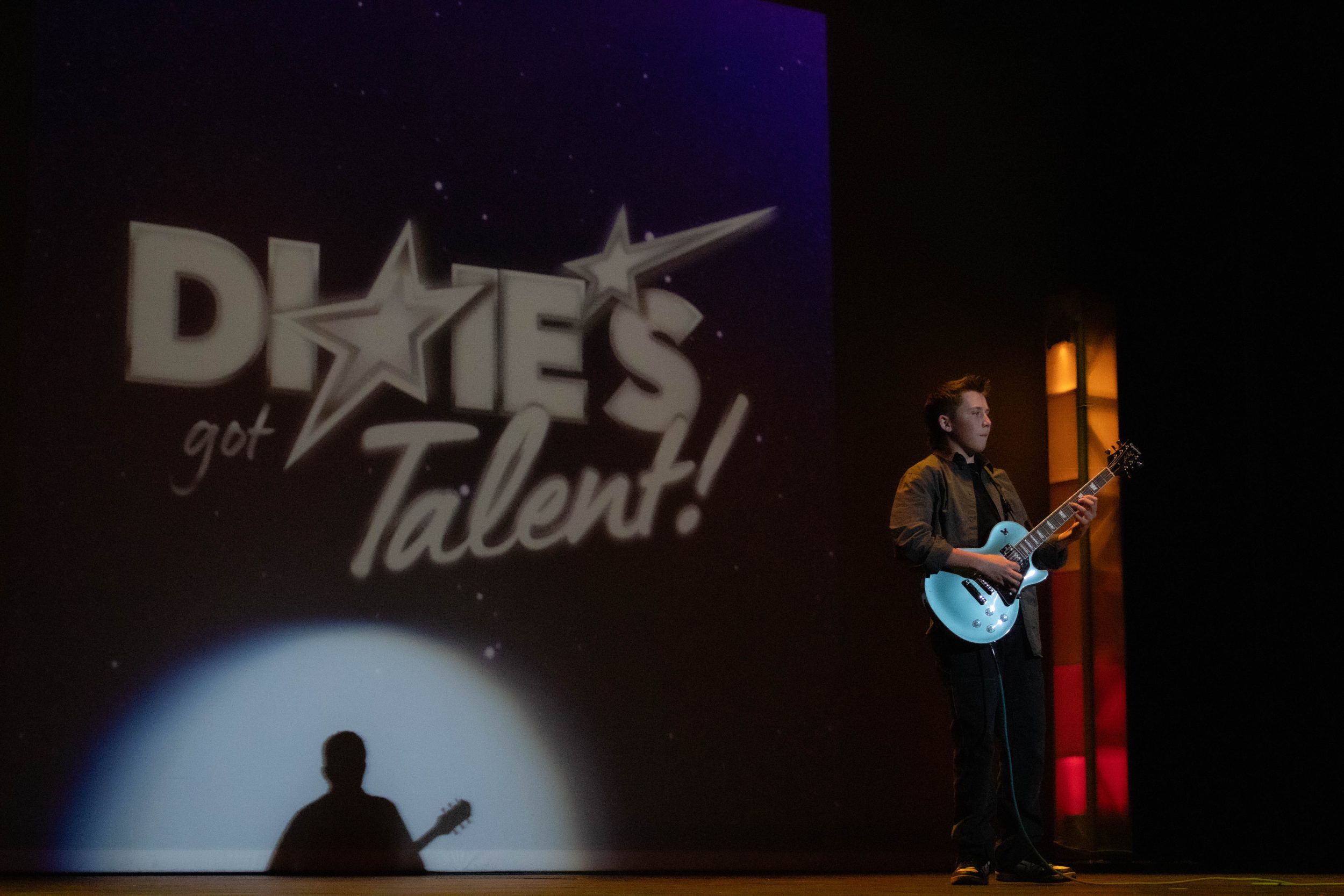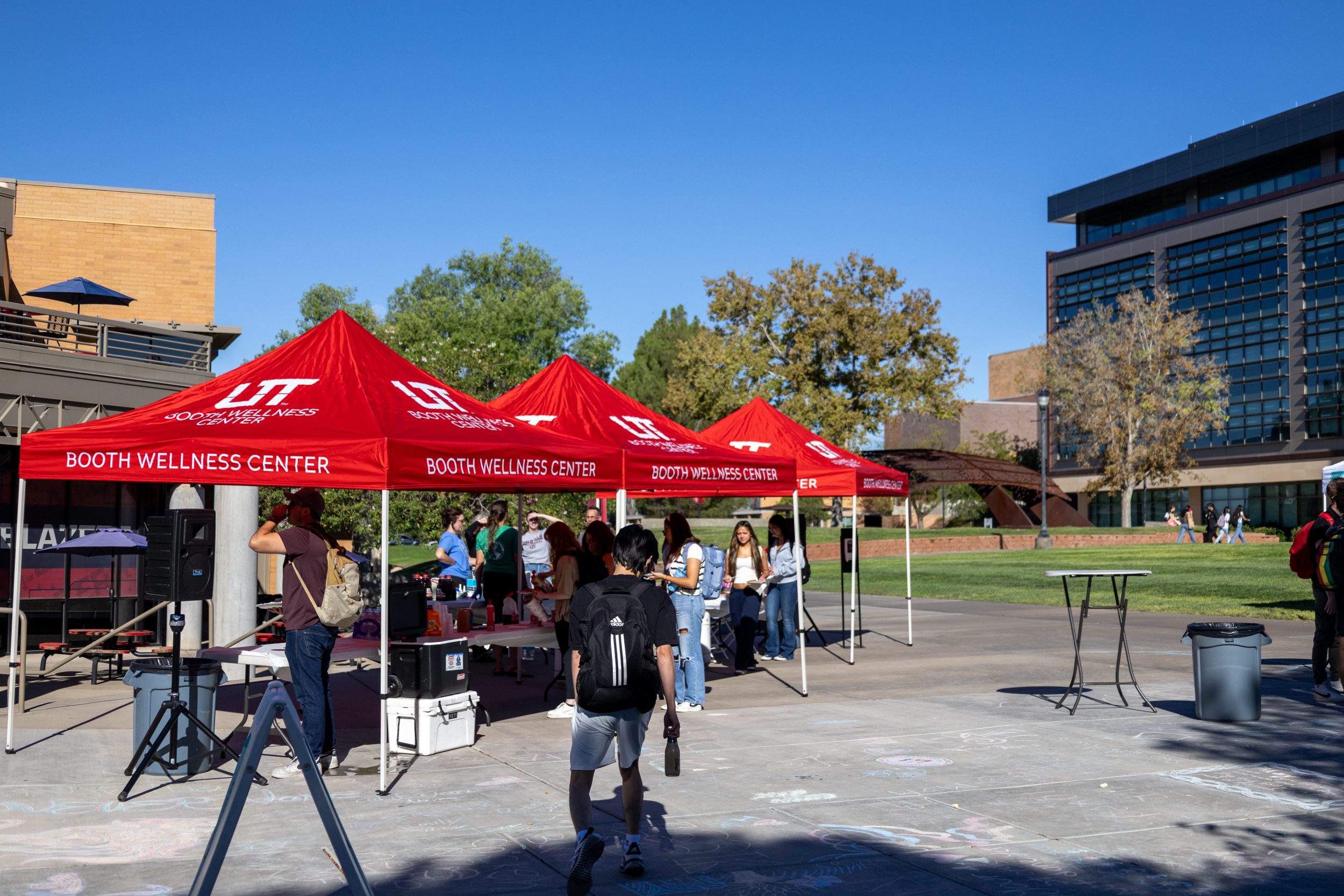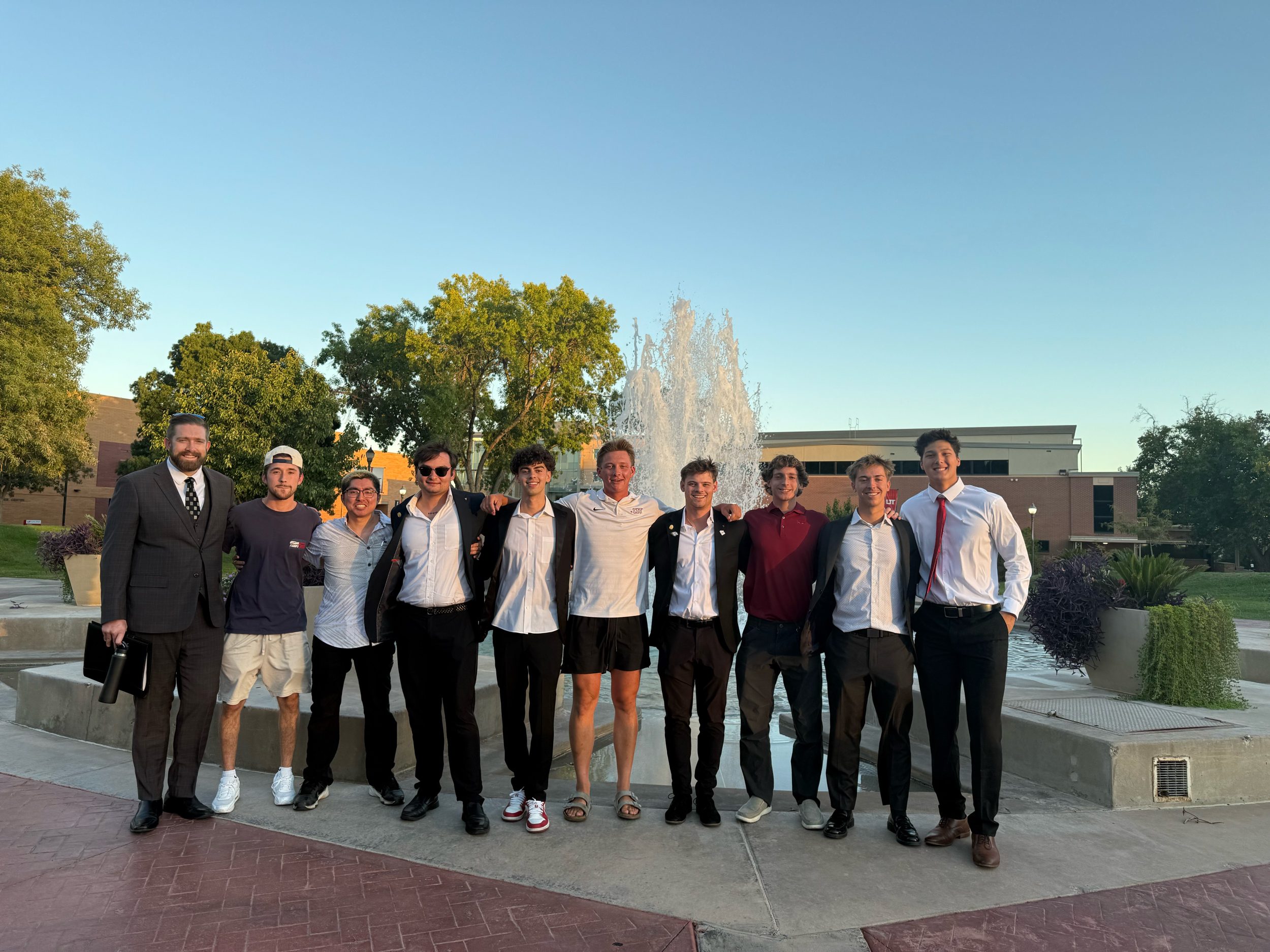The flash of a camera, the whir of a computer fan, the smooth glide of fresh paint on canvas and the brilliant glow of a test tube — all experiences you can find in programs at Utah Tech University.
Once a semester, Career Services and the Academic Advisement Center host an event where students can learn about these programs. Informational booths offer students a unique opportunity to speak with members of these degree paths and ask questions about each department.
This semester’s event was held Sept. 23 at the Gardner Student Center Ballroom. Several departments made an appearance, including the College of Humanities and Social Sciences, College of the Arts, College of Health and Human Performance, and College of Individualized Studies. The United States Army also had a booth.
Students were encouraged to engage with academic advisers to learn about majors, minors and certifications available to them. There was also the opportunity to learn about what departments paired well in major-minor combinations.
When asked what she recommends pairing with a performing arts degree, Danielle Johansen, an academic adviser for the College of Arts, said, “Secondary education, business and media studies.”
Katie Armstrong, the director of college advisement, greeted students at the door of the Gardner Ballroom with a packet listing many of the degree programs and certifications students could inquire about, including:
- Certificate in 2D animation
- Certificate in 3D animation
- Certificate in choral conducting
- Certificate in social media
- Minor in history
- Minor in criminology
- Minor in theatre
- Minor in mathematics
- Bachelor of Science in cybersecurity
- Bachelor of Science in respiratory therapy
- Bachelor of Fine Arts in studio art
- Bachelor of Arts/Science in English — English education emphasis
For more information on these opportunities, you can visit the Utah Tech website or schedule an appointment to talk with your adviser through Navigate.
Armstrong said this event is one of the highlights of the semester for their department, as it provides an excellent opportunity to build connections between students and faculty. Because of this, she encourages students to spend time at the event, not just stop in for a complimentary snack and leave.
“[Don’t] be afraid to go and talk to people about the different degree programs, minors, certifications we have. Get out there and practice your people skills,” Armstrong said.
Hannah West, a freshman management major from St. George, said that the event had been helpful to her so far, as she was interested to learn more about law-related programs at Utah Tech.
Students interested in attending future Career Services and Academic Advisement Center events should keep an eye on the standees, cork boards around campus and Handshake.


